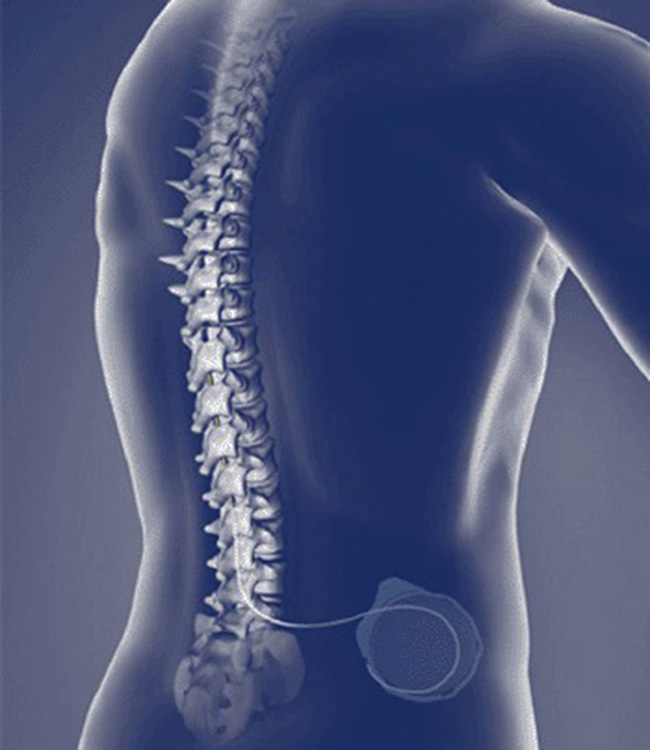Intrathecal Pump Targeted Drug Delivery Implantation
Intrathecal pump implantation is a specialized pain management solution for patients with severe chronic pain that hasn’t responded to oral medications or less invasive treatments. By delivering medication directly into the intrathecal space around the spinal cord, this system provides potent, targeted relief using a fraction of the dose required with traditional methods. This results in fewer systemic side effects and improved pain control.
This therapy is typically considered after a successful trial period, allowing patients and providers to confirm that the treatment is effective before permanent implantation. For those with complex pain conditions, intrathecal pumps can offer long-term, sustained relief and a better quality of life.

What is it?
An intrathecal pump is an implanted device that delivers pain medication directly into the spinal fluid, providing effective pain relief with lower doses than oral medications.
How is it performed?
The procedure involves surgically implanting a small pump under the skin of the abdomen and connecting it to a catheter in the intrathecal space. The procedure takes 1-2 hours.
Technology Partners
Medtronic
Keypoint #1-Lorem Ipsum
Lorem Ipsum mon fringilla dolor felis amet fusce.
• Libero auctor
• Enim molestie iaculis
• Massa bibendum
• Ultrices varius
Metus euismod tellus penatibus in ex morbi euismod mollis.
Phasellus venenatis augue luctus sollicitudin elementum suspendisse.
Treatment Benefits
Intrathecal pumps allow for precise, programmable delivery of pain medication, resulting in greater pain relief with lower overall drug exposure. Patients often experience fewer side effects compared to oral or intravenous medications, and the ability to adjust dosing makes this therapy flexible and responsive to changing needs. This system is especially valuable for managing severe neuropathic or cancer-related pain.
Who Can Benefit From This Treatment
This treatment is ideal for patients with chronic, intractable pain due to conditions such as failed back surgery syndrome, complex regional pain syndrome (CRPS), or cancer. It’s typically recommended for individuals who have not responded to traditional treatments and who benefit from a successful trial injection or temporary catheter placement. A full assessment is required to determine candidacy and ensure the therapy is safe and effective for the patient’s specific condition.
Learn more about Intrathecal Pump Targeted Drug Delivery Implantation by contacting the Minimally Invasive Spine and Pain Institute—our team is here to help you explore your options.
Aftercare for Intrathecal Pump Targeted Drug Delivery Implantation
Following implantation of an intrathecal pump, patients typically stay in a recovery area or hospital overnight for monitoring. Mild soreness or swelling near the incision sites—on the abdomen and lower back—is common and generally improves within a few days. It’s important to follow specific post-surgical instructions to allow the pump and catheter to settle properly and avoid complications. As the pump begins delivering medication, patients may notice gradual improvements in pain and a reduction in the need for oral medications.
Tips for a Smooth Recovery
Follow these guidelines to support healing after intrathecal pump implantation:
- Avoid bending, twisting, or heavy lifting for several weeks to protect the catheter placement
- Keep both incision sites clean and dry until fully healed
- Use prescribed medications as directed to manage post-surgical soreness
- Avoid sleeping directly on the pump site to reduce discomfort
- Report any signs of infection, severe headache, or pump malfunction to your provider

